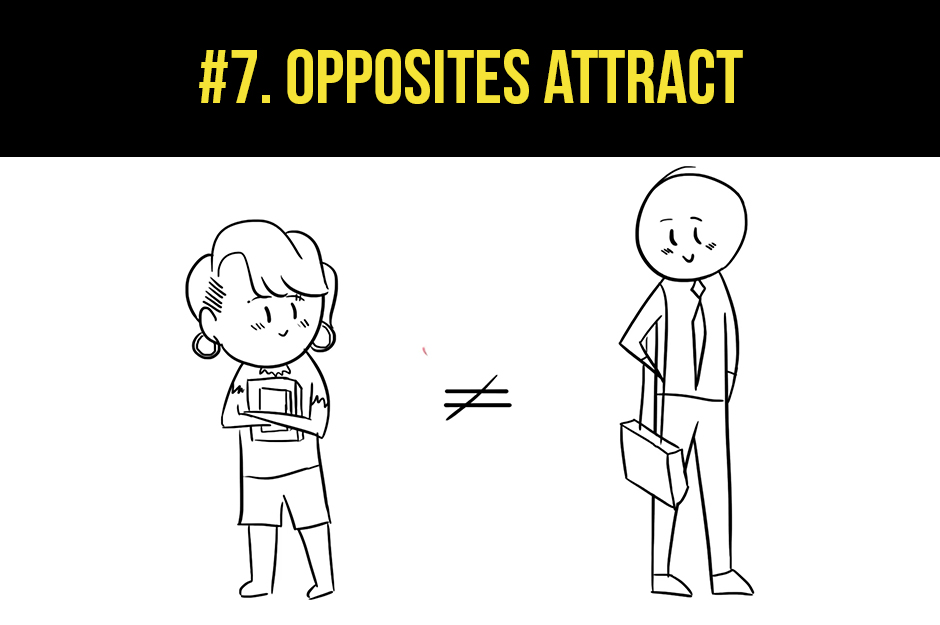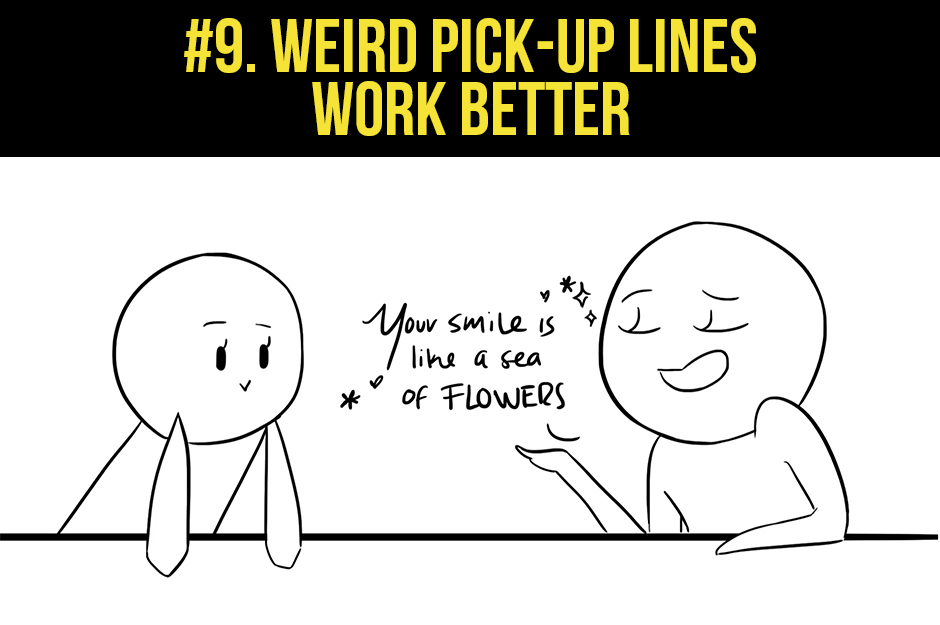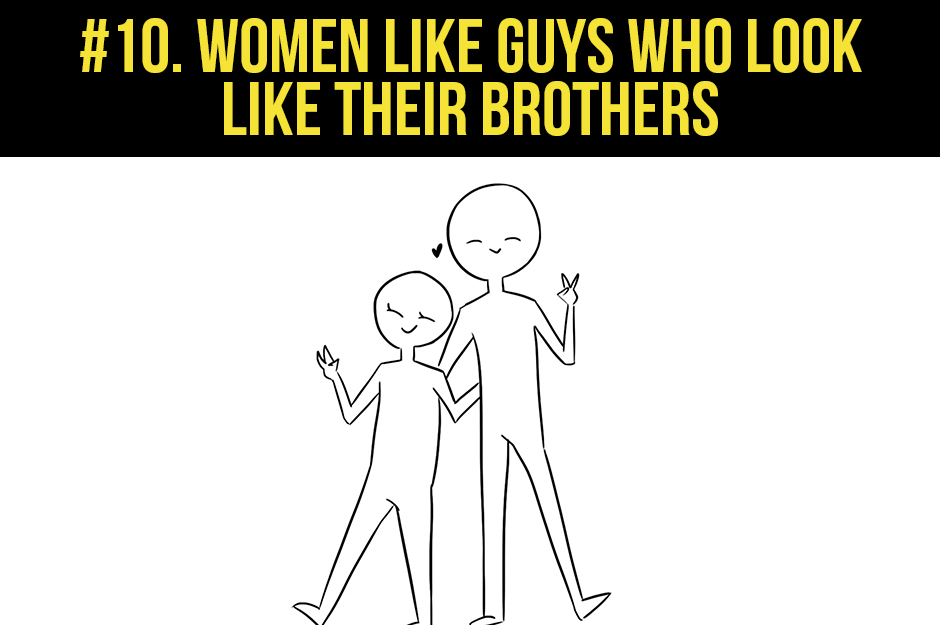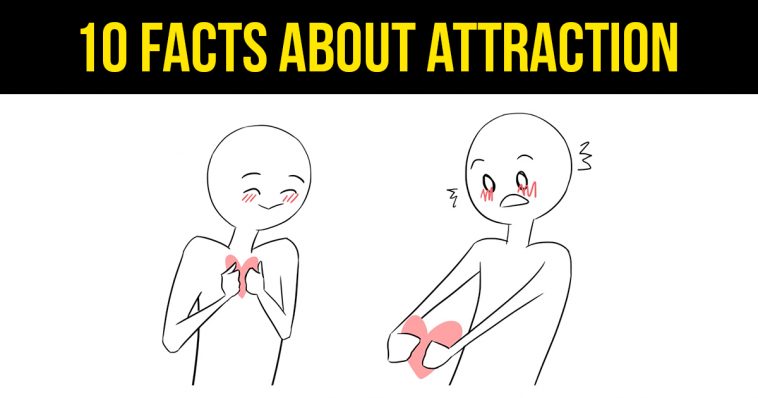Psychologists are discovering more and more about human attraction
every day. These facts may surprise you, disgust you, or even help you
when you try your hand at flirting. Mating and courtship rituals may
seem pretty simple at first glance – two people get together, and
usually within a few minutes they’ve formed an opinion about whether
they’re sexually attracted to each other. But what makes a person
attractive? When you ask people why they’ve fallen in love, they can’t
quite explain it. They say things like “I just knew they were the one,”
or “It was love at first sight.” But psychologists are uncovering what’s
really going on beneath it all, and how you might react depends on your
point of view. Do you think love and attraction are just chemical
reactions? If so, does that make love less entrancing and magical for
you? Or does that in fact make love even more interesting and amazing?

1. Sound And Smell Play A Bigger Role Than You Think
A new
study highlighted
the multi-faceted elements to human attraction, including a hefty
emphasis on sound and smell. The study, which was carried out at the
University of Wroclaw in Poland, was published in a recent publication
of
Frontiers In Psychology. The study showed that people can
determine a wide variety of characteristics from voice alone. People can
not only guess someone’s age and gender by listening to their voice,
but also the weight, size, dominance, and emotional state of the
speaker. They can also accurately guess these traits from scent as well.
This means that people rely on sight, sound and smell when it comes to
being attracted to people, and all 3 senses play a vital role in making
people attracted to one another.
The importance of scent in attraction is largely due to a androgen
steroid called androstadienone. This steroid is emitted through
the human axillary region, and it has been linked with human attraction.
This is because it’s odorous chemical compound, and people can smell it
on each other when they interact with each other. One
study examined
this further and found that there many other odors that were connected
with mating and human attraction, not just androstadienone. These
chemical compounds, which are naturally occurring in body odor, increase
people’s perceived attraction of potential mates. Sometimes this
happens from a distance, before verbal communication or physical
interaction even takes place. HLA complexes is also something that is
communicated through scent, and that will be touched on later in this
article.

2. Women’s Attraction Changes Throughout Menstrual Cycle
According to several
studies,
women are attracted to different things depending on where they are in
their menstrual cycle. These studies show that when a woman is in her
most fertile stage, she will prefer men who have more masculine
features; deeper voices, more symmetrical faces (an indicator of strong
genetics), competitiveness, and victory over other males. Even more
interesting is what happens to women during peak ovulation. According to
the aforementioned study, women with less masculine partners are more
likely to be attracted to other men during this time. It’s the genetic
hardwiring to find a stronger mate.
To test their hypothesis, the study surveyed 54 women in heterosexual
relationships from age 18-44 who were students at the University of New
Mexico. They were asked questions about how attracted they were to
their partners during various parts of their menstrual cycle. In turn,
their male partners were analyzed based on their facial symmetry, which
is an indicator of testosterone levels. Note that this study was not
analyzing same-sex couples.

3. Men Don’t Value Intelligence As Much As Women
Some of you might not be too surprised at this, but a recent
study has
shown that when looking for a mate, men value intelligence considerably
less than women do. It seems like more men will go for the head
cheerleader than the bookworm. The study, which was carried out by Adam
Karbowski at the Warsaw School of Economics found that this wasn’t the
same with women. Women were fairly likely to date a man with below
average good looks and high intelligence. But the chances that an
average looking woman will be deemed attractive by a male stays at
around 40% – even if she’s a genius. Does this make men more shallow
than women? Not necessarily, but psychologist suggest that at least when
it comes to looks, women are less picky than men.
The study created an experimental speed dating session at Colombia
University. Individuals had a brief “date” which each other that lasted 4
minutes. Afterwards, they were asked to evaluate the attractiveness and
intelligence of their partner from a scale of 1 to 10, and how likely
they were to go on another date with them. When it came to that last
question, women did not typically exclude men who were not physically
attractive, while this just wasn’t the case when men answered the
question.
4. Why Do Pedophiles Exist?
Not all attraction is good. Take pedophiles for example. Most people
are horrified at their very existence. But why do pedophiles even exist?
Looking at it from an evolutionary standpoint, it makes no sense. Sex
with children is in no way advantageous as children cannot carry
offspring. It’s clearly a mental disorder. But what causes it? One
study found
that pedophiles were 33% to 75% more likely to have been abused in
childhood. But what about pedophiles who weren’t abused as children?
Data from
another study found that pedophiles made different neural connections
than other people. Inside the brain, the faces of children generally
stimulate more nurturing behavior, while adult faces stimulate more
sexual behavior. Using images of people’s brains, researchers found that
the part of the brain stimulating sexual behavior was attuned to sexual
immaturity for pedophiles. The next question is off course, why, but as
of now they can only suggest “neurodevelopmental disturbances”.
5. People Find Narcissists More Attractive
Narcissists get a really bad rap, but a recent
study found
that most of us are incredibly attracted to them. In a speed-dating
survey, it was found that the people with the most narcissistic
personality traits consistently scored higher when evaluated for
attractiveness. This may seem kind of surprising at first. After all, no
one ever says they
want to date someone who’s self-absorbed and
entitled. But if you really examine what narcissists are, it all becomes
clearer: narcissists care a lot about their appearance. They’re more
likely to take more time making sure they look good before going out.
They also place immense importance on their sex appeal, and think of
themselves as being sexual gods. They say that you can only love others
if you love yourself first. For narcissist, that’s a walk in the park.
Again, this study used speed dating as a method to collect their
data. Subjects were asked to rate their partners based on how likely
they were to pursue a short and long-term relationship with them. In
both areas, narcissists scored higher than other groups. Interestingly,
psychopathy in women was also linked with high appeal for short-term
relationships, the study found.

6. How To Stop You Partner From Cheating On You
One of the oldest struggles of relationships is cheating. Well, new
research might
just have discovered a way to make sure this never happens to you. The
answer? Don’t date really attractive people. Instead, settle for someone
of average attractiveness, or just above average. Why? The research
found that when you date someone more attractive than you, that person
begins to feel more attractive than they really are. And when someone
feels more attractive and less satisfied with their current
relationship, they are much more likely to cheat on their partner. There
were plenty of other sets of data that the research team from Harvard
examined, such as celebrity relationships and attractiveness of divorced
men. Part of this is logical – after all someone who is more attractive
is going to get hit on a lot more than someone who is average looking.
If someone is flirted with more, they are given more opportunities to
cheat.
The researchers looked at 4 studies. The first showed that people who
were rated as more attractive in their high school yearbook photos had
shorter marriages on average, and were more likely to divorce. The
second study looked at high-profile celebrities, and found the same
pattern. The other two examined the relationship between physical
attraction in one partner, and the tendency to pursue an attractive
alternative to the pre-existing partner.

7. Why Opposites Attract
There’s an often repeated phrase when it comes to attraction:
“Opposites attract.” Until now, it was just a saying, but now science
seems to have confirmed it. A recent
study found
that people are actually attracted to a different genetic blueprint
than their own. This genetic blueprint is called an HLA complex,
or human leukocyte antigen. A person’s HLA complex is vital in their
immune function, specifically their ability to distinguish between enemy
cells like viruses and the cells that make up one’s own body. What does
this have to do with attraction? People are sexually attracted to those
who have HLA complexes that are noticeably different than their own.
And according to this study, people can tell if someone has a different
HLA complex by their scent alone. This lends a little more weight to the
argument that “love” is merely a chemical reaction.
254 couples were chosen to participate in the study. Each partner was
asked to provide a DNA sample. The researchers then did a DNA analysis,
targeting the HLA complexes. They found that HLA dissimilarity was
associated with higher sexual satisfaction, and higher partner
satisfaction in general.
8. Beards Are Hot
Are you ready for some information that can actually help you with attraction? Well, according to one
study,
all of you guys out there might want to consider growing a beard. Why?
The study found that females are considerably more attracted to men with
facial hair than those who are clean shaven. But if you want to be
sexually attractive, don’t grow a full, bushy beard. Those with some
degree of facial hair (a little bit of stubble, for example) were seen
as more sexually attractive than those who were clean shaven
and those
who had full beards. Light stubble was specifically identified by the
surveyed women as the best candidates for one night stands. When women
were asked who they thought would make the best husbands, they chose men
with heavy stubble and full beards. So it really depends what women are
looking for, but the general consensus is that clean-shaven men are
less sexy.
The study used a computer to morph male faces. Clean-shaven, light
stubble, heavy stubble and full beards were all morphed onto the male
faces using computer graphic imaging. A survey of 8520 women was done
which asked whether these men were desirable for physical attractiveness
in general, for a short-term liaison or a long-term relationship.

9. Weird Pick-Up Lines Work Better
When it comes to pick-up lines, a recent Chinese
study stated
that it’s better to be weird than cliche. Actually, what they really
found was that is was better for men to use metaphors in their pick-up
lines than more predictable lines. As the researchers explained,“…the
use of metaphorical, as opposed to prosaic language by men in
compliments is perceived by women as indicative of creativity and
intelligence.” What this means, according to the researchers, is that
men will have more luck if they say things like “your shoulder is a
lover’s roof” or “your smile is the sea of flowers” than “Your look
nice”.
So you need to get creative if you want to get that girl to listen to
your pick up-line. Women value creativity as a strong evolutionary
trait which can indicate the ability to think on their feet. The
researchers surveyed 124 women and asked them their preferences for
metaphorical or straight-forward compliments throughout their menstrual
cycles.

9. Weird Pick-Up Lines Work Better
When it comes to pick-up lines, a recent Chinese
study stated
that it’s better to be weird than cliche. Actually, what they really
found was that is was better for men to use metaphors in their pick-up
lines than more predictable lines. As the researchers explained,“…the
use of metaphorical, as opposed to prosaic language by men in
compliments is perceived by women as indicative of creativity and
intelligence.” What this means, according to the researchers, is that
men will have more luck if they say things like “your shoulder is a
lover’s roof” or “your smile is the sea of flowers” than “Your look
nice”.
So you need to get creative if you want to get that girl to listen to
your pick up-line. Women value creativity as a strong evolutionary
trait which can indicate the ability to think on their feet. The
researchers surveyed 124 women and asked them their preferences for
metaphorical or straight-forward compliments throughout their menstrual
cycles.

10. Women Like Guys Who Look Like Their Brothers
Another tip for guys trying to land a date with a girl is to try to look like her siblings. It may sound weird, but one
study
suggests that girls are likely to be attracted to guys who look like
their brothers. People were asked to rank the similarities between
women’s partners and those women’s brothers. The people surveyed were
not actually aware that one was the brother and that one was the
partner. But don’t be too grossed out – the research found that the
similarities were only slightly above average (27% as opposed to 25%).
We already know from other studies that people are more likely to be
attracted to potential partners that resemble their parents, so it’s
really not too much of a stretch to think that the same would apply to
other members of the family.
 Today I’m going to share a simple exercise that I use to achieve mental clarity quickly. This is a great way to
Today I’m going to share a simple exercise that I use to achieve mental clarity quickly. This is a great way to
























